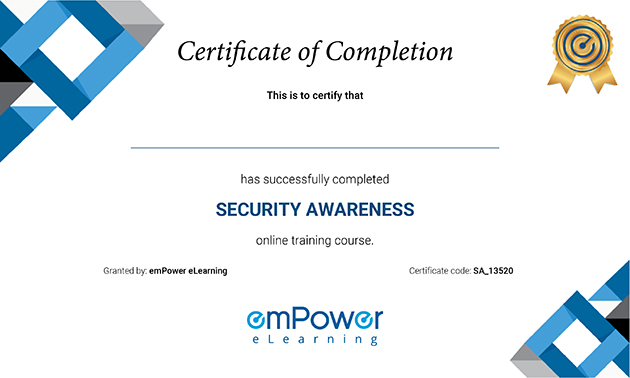Keep your company’s confidential information safe with our employee identity theft training.
Empower yourself with our identity theft training: Learn to guard against thieves from stealing and misusing your identity.

Our Client

































What is Identity theft Training
Our identity theft training can help you to safeguard yourself and your business from identity thieves. First, we’ll help you understand why learning about identity theft is so important. We’ll help you to understand the risks that you face. Identity theft is a serious crime. Not only can it cause financial and reputational losses, you can end up with other serious problems that can persist for years after the original offense.
As you go through the identity theft training course, you’ll learn to identify the danger signs, and how to react to them. We’ll give you some practical advice on protecting yourself. You’ll learn about the steps to help you ensure that your identity hasn’t been stolen.
We’ll also introduce you to the common myths about ‘preventing identity theft’ that don’t help at all. By the end of this training, we aim to equip you with tools to safeguard yourself from identity thieves, and how to react if you realize that your identity has been stolen.
Course Description
| Category | Information Security |
| Course Name | Avoiding Identity theft |
| Duration | 30 mins |
| Certificate Included | Yes |
| Languages | English |
| Course Type | Interactive online training |
| Narration | Yes |
| Format | LM-light, SCORM 1.2 |
| Supported Devices | Desktop/Laptop, Tablet, Phone |
| Last Updated | June 30, 2021 |
What you’ll learn
- What is identity theft, who it affects, and what problems it can cause
- What is GLBA, and how it applies to banks
- How identity theft happens
- How to prevent identity theft
- What are red flags
- How to identify a red flag, and respond to it.
Curriculum
- Avoiding identity theft
- Structure of avoiding identity theft training
- What is identity theft?
- Potential impact of identity theft
- Identity theft and computer crime
- How identity theft happens
- Identity theft via Mail theft
- Identity theft via Dumpster diving
- Identity theft via Burglary and Car prowl
- Identity theft via Fake websites and emails
- Identity theft via Bribery and Corrupt employees
- Identity theft via Password cracking
- Other examples of Identity theft
- What is Mail redirection
- What happens after identity theft?
- Preventing identity theft
- Basic principles of identity protection
- Can I refuse to supply information?
- Dealing with paper documents
- Paper documents identity thieves look for
- Taking care of your personal information online
- Check to see if SSL is enabled
- Check the address pan
- Check the lock icon
- Driver’s license and other cards
- Other threats and countermeasures
- Spotting and reacting to identity theft
Who Should Attend?
- IT security staff who need to expand their understanding of their attack surface
- System and network administrators who want to defend their systems against social engineering attacks
- Staff members that use PCs, laptops, and mobile devices to connect with office network
Why emPower
100s of customers
- 14+ Years of experience in working with small to large businesses from different industries
- 95% customer retention
Customer Experience
- 24x7 dedicated support and toll free number
- 99%+ guaranteed uptime
Extremely Cost-effective
- As low as $0.99/user/yr
- We will match or better the price of your current LMS
Effective Courses
- Each course is 20-40 min long to ensure engagement with quizzes and certificate
- SCORM 1.2 Compliant
Implementation
- No setup costs
- We deploy your customized solution in less than 48 hours
Our Achievements
Here you can review some statistics about our Education Center
Start Your Certification Course Today
The most effective way to avoid identity theft is to minimize the personal information you share with others. This applies especially to the Internet. Be cautious with the information that you share online. This includes the personal information you expose in your social media profiles.
- Never share your personal information unless it’s absolutely necessary.
- Keep your tax returns, bank statements, and other sensitive documents safe
- Destroy paper documents properly.
- When sharing personal information online, check if the website has a valid SSL certificate
- Use safe surfing practices. For more information, look at our safe surfing course.
The most basic strategy to guard yourself from identity theft is to use the 3 Ds. Deter, Detect, and defend. To deter identity theft, be careful with your personal information.
To detect, be vigilant with your bills and keep an eye on your credit reports. To defend yourself, activate fraud alerts and go to law enforcement as soon as you see signs of a compromise.
If you have spotted signs of identity theft, go to law enforcement immediately. File a report. The police report is vital in re-establishing your credit. It’s the most critical step. Without a police report, many companies and organizations will not be able to help you.
Invest in basic physical and electronic security devices such as lockable file cabinets, antivirus software and computer firewalls for your computers, mobile phones and tablets. Never dispose of sensitive documents without shredding them properly.

